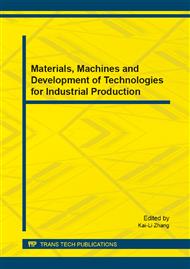p.470
p.475
p.480
p.484
p.492
p.498
p.503
p.509
p.514
Glass Capillary Tension Feed System Structure Design
Abstract:
The nanofluidic devices with the nanopores are the foundation of the third generation of the DNA sequencing technology. Comparing with the traditional nanopores constructed on the nanofilms, the nanofluidic devices made by the SiO2 have higher stiffness, strength and stability. We study on the structure design of glass capillary tension feed system, used in manufacture of the nanofluidic devices with the nanopores. Firstly, we design glass capillary tension feed system, including the mechanical moving parts, heating parts and the control parts, which is used to heat glass capillary and stretch it to get glass capillary with a smaller inner diameter in need. Among them, the control accuracy of the moving parts is up to 1μm, the heating range of heating parts is less than 5mm, and the temperature can reach 1500 ̊C. Then we make a prototype, and do some experiments with it. According to the experiment results, the system can be used for glass capillary tension, and the inner diameter of the nanoglass capillary stretched by this system is as small as 500 nm.
Info:
Periodical:
Pages:
492-497
Citation:
Online since:
August 2014
Authors:
Price:
Сopyright:
© 2014 Trans Tech Publications Ltd. All Rights Reserved
Share:
Citation:


